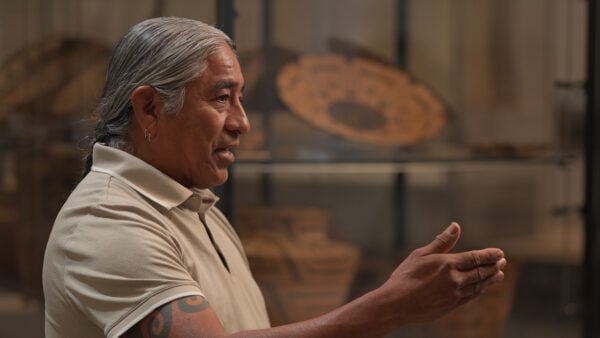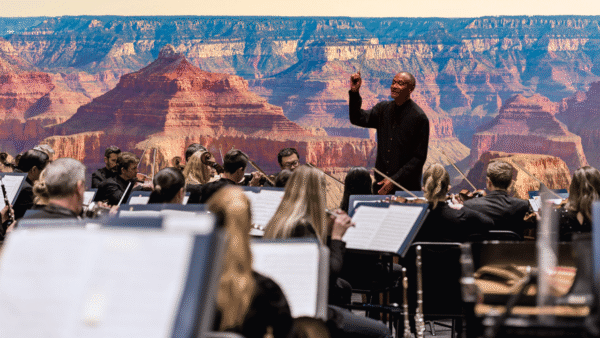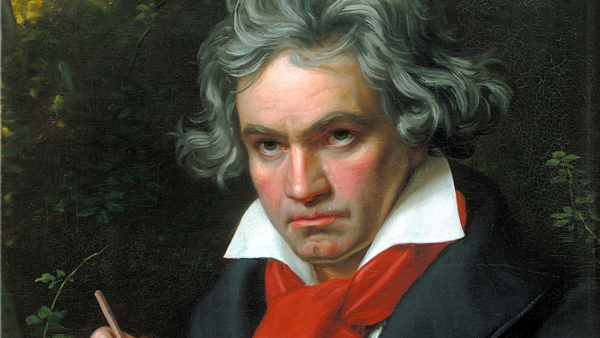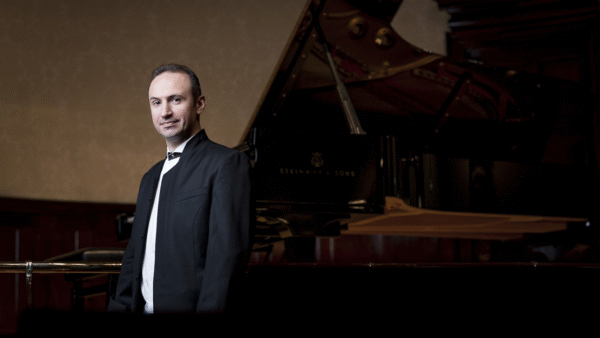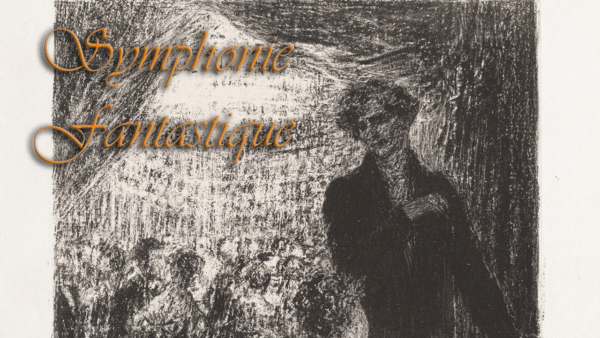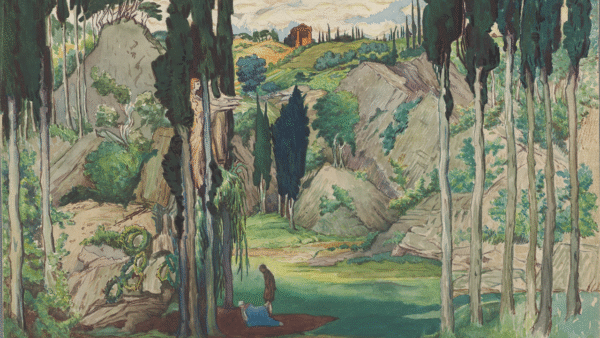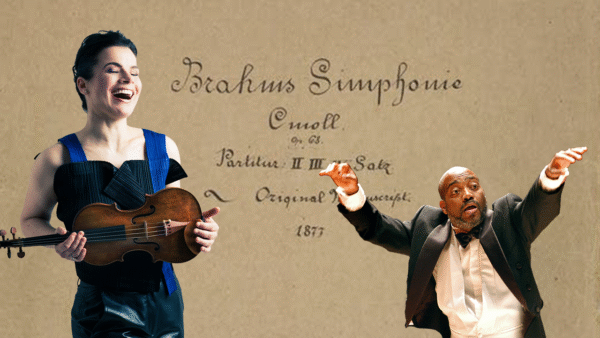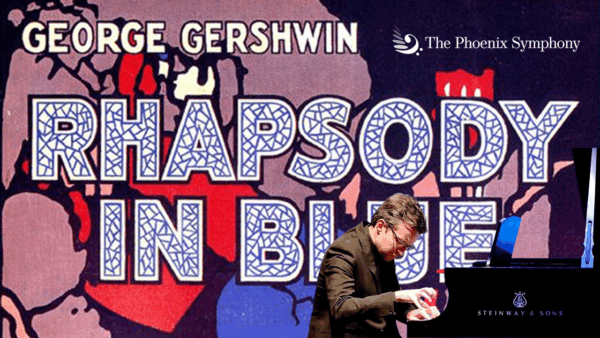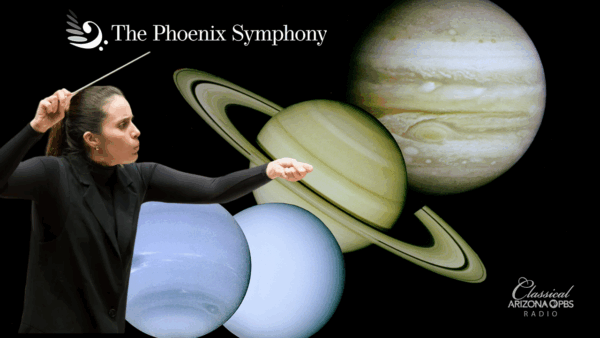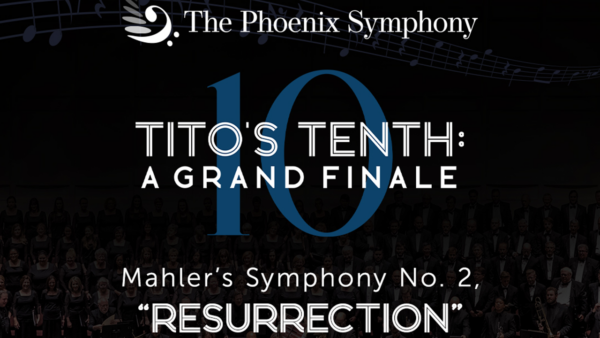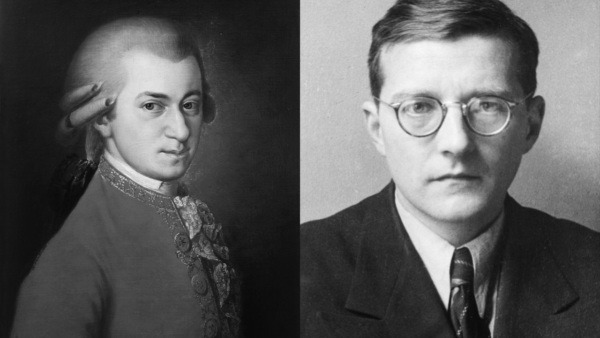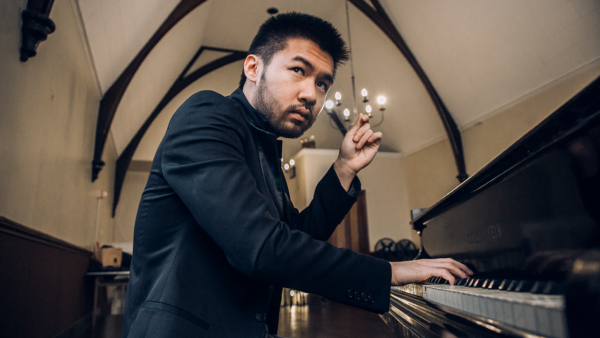The Mighty ‘Carmina Burana’
Sept. 23, 2024
Carl Orff’s ‘Carmina Burana:’ A Journey from Medieval Texts to Modern Controversy
Arizona PBS is thrilled at the return of The Phoenix Symphony for a series of concerts which will be broadcast through the beginning of December with host Mike Bolton. Starting off the season is the rhythmically lively and heartbreakingly lyrical “Carmina Burana,” Carl Orff’s iconic cantata which premiered in 1937. Virginia G. Piper Music Director Tito Muñoz is on the podium for this concert which also includes Adam Schoenberg’s fascinating and dynamic “Picture Studies.”
Carl Orff’s “Carmina Burana” is one of the most recognizable and frequently performed works in the classical music repertoire. Its thunderous opening, “O Fortuna,” has become synonymous with epic drama and is instantly recognizable even to those who may not know its origin. Yet, beyond its powerful melodies and rhythms lies a fascinating story of creation, musical brilliance, historical controversy, and a legacy that that is both controversial and actively debated today.
The creation of “Carmina Burana”
“Carmina Burana” was composed between 1935 and 1936 and represents the first part of Orff’s larger trilogy titled “Trionfi.” Each of the three parts is based on medieval and earlier texts and collectively they explore themes of love, fate and human triumph. “Carmina Burana” is based on a collection of 13th-century medieval poems discovered in a manuscript at the Benedictine monastery of Benediktbeuern, Bavaria, in 1803. The manuscript, also named “Carmina Burana,” meaning “Songs of Beuern,” contains a diverse collection of texts written by Goliards, wandering students and clerics known for their satirical and often bawdy verses. These poems cover a wide range of themes, including the fickleness of fortune, the joys and perils of drinking, the beauty of nature and the pleasures and pitfalls of love.
Orff selected 24 of these poems and set them to music, creating a work that blends the ancient with the modern. His composition draws on medieval forms, yet it is infused with the rhythmic vitality and harmonic boldness characteristic of 20th-century music. The result is a piece that feels both timeless and strikingly contemporary, resonating with audiences across generations.
Musical highpoints
“Carmina Burana” is structured in a prologue and three main sections: “Primo vere” (In Springtime), “In Taberna” (In the Tavern) and “Cour d’amours” (The Court of Love). Each section showcases Orff’s talent for creating music that is both accessible and deeply expressive.
The work opens and closes with the famous “O Fortuna,” a powerful lament on the capriciousness of fate. This chorus, with its driving rhythms and forceful choral exclamations, sets the tone for the entire piece, encapsulating the themes of destiny and fortune that run throughout.
In “Primo vere,” the music is characterized by its lightness and pastoral quality, reflecting the joy and renewal of spring. The chorus “Veris leta facies” is particularly notable for its lively and dance-like rhythms, evoking the exuberance of nature in bloom.
“In Taberna” shifts the mood dramatically, with earthy, robust music that depicts the revelry and excess of tavern life. “In taberna quando sumus” is a standout in this section, with its rhythmic vigor and playful, yet darkly humorous, portrayal of drunken carousing.
The final section, “Cour d’amours,” explores the themes of love and desire. Here, the music becomes more tender and lyrical, particularly in the soprano solo “In trutina,” which expresses the inner conflict between love and chastity. The section culminates in the rapturous “Blanziflor et Helena,” leading to the powerful reprise of “O Fortuna,” bringing the work full circle.
Controversy and association with the Third Reich
While “Carmina Burana” is celebrated for its musical brilliance, its history is not without controversy, particularly concerning its association with Nazi Germany. The work premiered in Frankfurt in 1937, during the height of the Third Reich. Orff’s composition quickly gained favor with the Nazi regime, partly because its medieval themes and Germanic roots aligned with the cultural ideals promoted by the Nazis. Moreover, Orff’s musical style–direct, accessible and rooted in folk traditions—was seen as embodying the “purity” of German art, making it an attractive tool for Nazi propaganda.
After World War II, like many German artists and intellectuals, Orff was subject to denazification proceedings conducted by Allied forces to determine the extent of his involvement with the Nazi regime. These proceedings were part of a broader effort to assess and rehabilitate individuals in post-war Germany.
Orff managed to convince the authorities he was not an active supporter of the Nazi party. He argued he had maintained his focus on his work and had no deep ties to the regime. Orff also claimed he had been secretly involved in the anti-Nazi movement, although this claim has been widely debated and lacks substantial evidence. His defense was successful, and he was not penalized in the aftermath of the war, allowing him to continue his career without significant repercussions.
Some scholars argue Orff was complicit in the Nazi cultural agenda, while others contend he simply navigated a difficult political landscape to continue his work. Regardless of Orff’s personal stance, “Carmina Burana” remains inextricably linked to this dark chapter of history, casting a shadow over its legacy.
“Carmina Burana” in popular culture
Despite, or perhaps because of, its controversial history, “Carmina Burana” has found a prominent place in popular culture. The opening chorus, “O Fortuna,” has been used in countless films, television shows, commercials and even sports events to evoke a sense of impending doom, epic struggle or grand spectacle. Its use in movies like “Excalibur” (1981) and “The Doors” (1991) has cemented its status as a go-to piece for creating an intense atmosphere.
This widespread use has introduced “Carmina Burana” to audiences far beyond the concert hall, ensuring its place as one of the most enduring and impactful works of the 20th century. However, this ubiquity also risks reducing the work to a mere soundtrack for spectacle, overshadowing the rich complexity and historical context that make “Carmina Burana” a true masterpiece of choral music.
Carl Orff’s “Carmina Burana” is a work of striking contrasts, ancient and modern, joyous and dark, celebrated and controversial. Its musical brilliance is undeniable, but its history serves as a reminder of the complex interplay between art, politics and culture, challenging us to engage with it thoughtfully and critically.
About the soloists
Our soprano, Jeni Houser, is a powerhouse on stage, with a radiant voice and captivating stage presence. Her repertoire showcases her versatility as Mozart’s Queen of the Night in “The Magic Flute” and Zerbinetta in Strauss’s “Ariadne auf Naxos,” to Cunegonde in Bernstein’s “Candide” and Joanna in “Sweeney Todd.”
Arnold Livingston Geis, our tenor, is known for his rich voice and compelling stage presence. His repertoire includes Rodolfo in “La Bohème,” Don José in “Carmen” and the Duke in “Rigoletto;” he made his Lincoln Center debut creating the role of Mr. Marks in Ricky Ian Gordon’s “Intimate Apparel.” Geis even provided a voice for the animated television series “Family Guy,” appearing as, you guessed it, an opera singer.
Baritone Michael Adams has wowed audiences as Escamillo in “Carmen,” Figaro in “The Barber of Seville” and Marcello in “La Bohème.” He has sung with several prestigious opera companies, including The Metropolitan Opera, Houston Grand Opera, Lyric Opera of Chicago and the Santa Fe Opera, among others.
Be sure to join Arizona PBS at 7:00 p.m. on Monday, September 23 on DTV 8.5 Classical Arizona PBS, KNAU Arizona Public Radio and 89.5 Classical KBACH.
Featured in this episode:
Schoenberg – Picture Studies – The Phoenix Symphony; Tito Muñoz, conductor
Orff – Carmina Burana – The Phoenix Symphony; Tito Muñoz, conductor, Jeni Houser, soprano; Arnold Livingston Geis, tenor; Michael Adams, baritone
Berlioz – Le carnaval romain, Op. 9 – The Phoenix Symphony; Tito Muñoz, conductor
